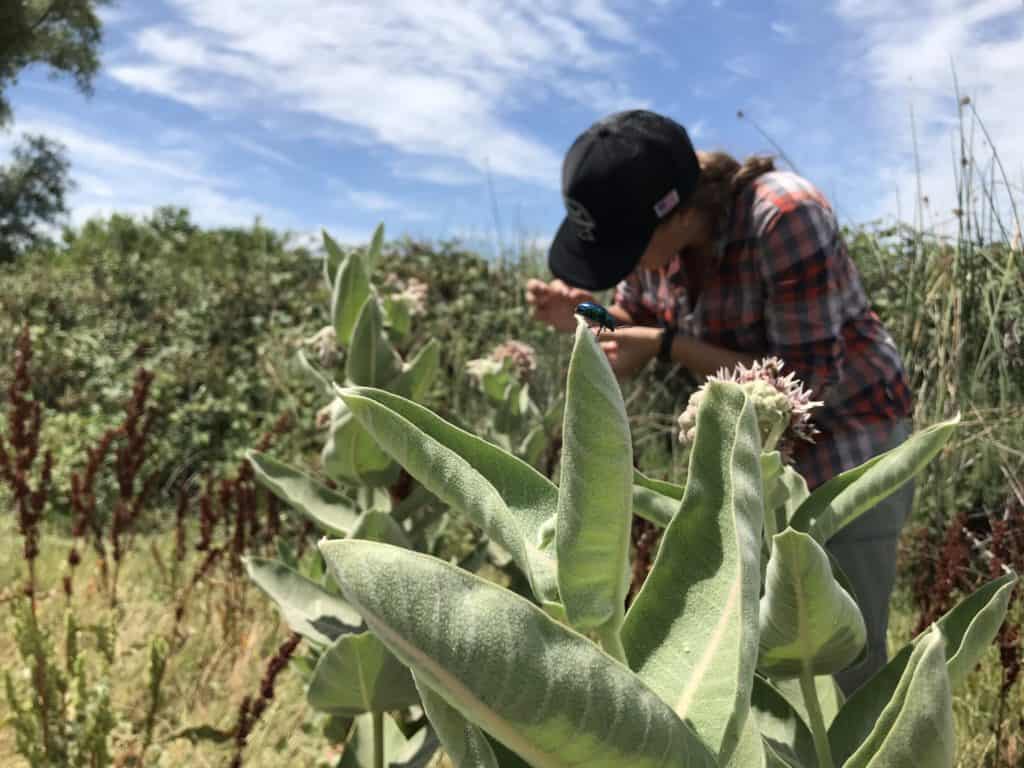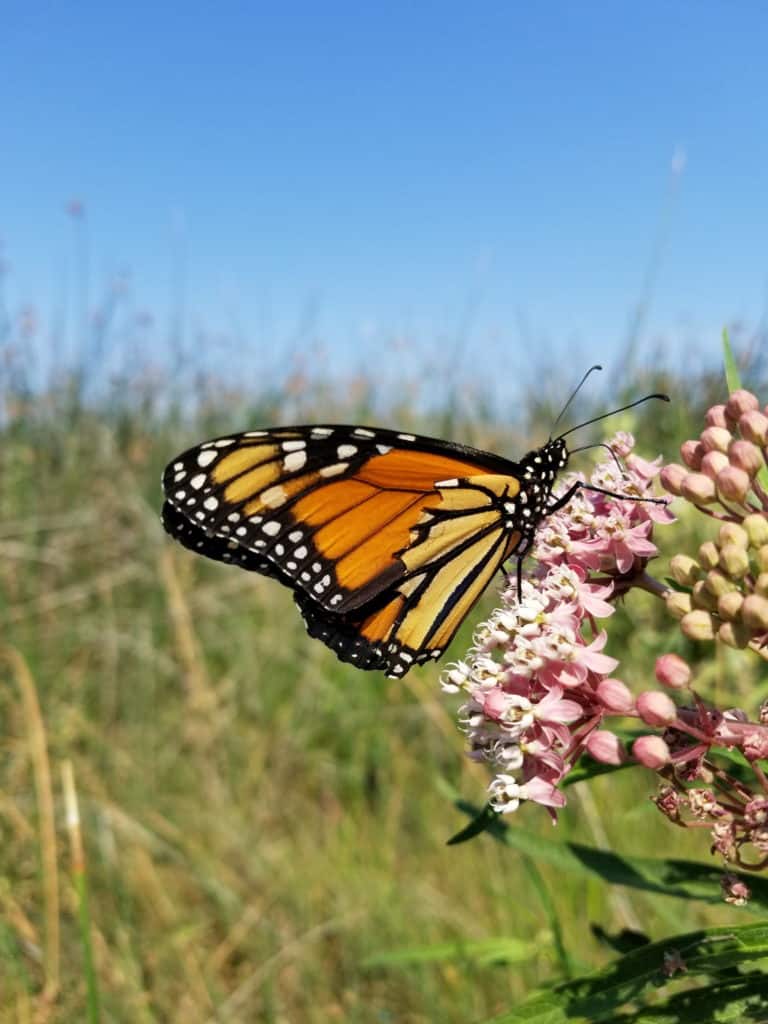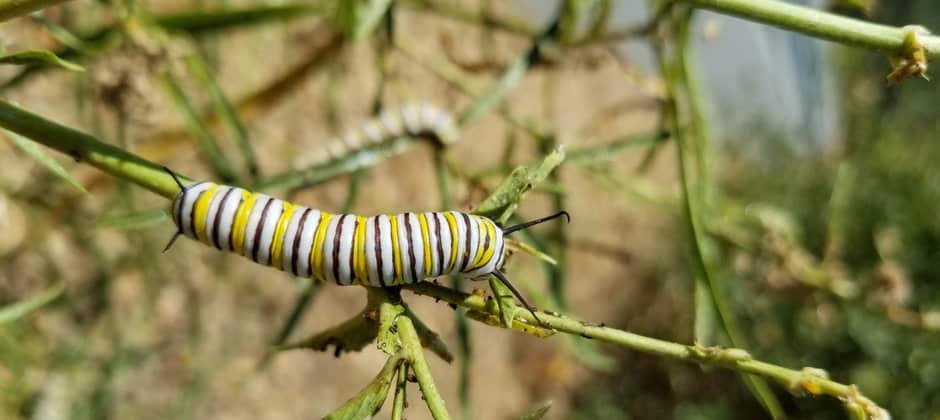Share this article
Key monarch plant may be packed with pesticides
Milkweed plants critical for the life cycle of monarch butterflies are loaded with pesticides in Northern California, according to recent research.
Past studies have pointed to pesticides as a major driver in monarch butterfly decline, said Sarah Hoyle, a co-author of a study published recently in Frontiers in Ecology and Evolution, but nobody had analyzed which chemicals were present in milkweed and in what quantities in California. Since monarchs (Danaus plexippus) depend heavily on the plant during their multi-generational migrations, her team set out to do just that, analyzing plants in California’s Central Valley.
They collected 227 milkweed samples from 19 sites across the Central Valley and from stores that sell plants for home gardening. After screening the samples for 262 pesticides, they found the plants contained 64 of them, including 25 insecticides, 27 fungicides, 11 herbicides and one pesticide additive. On average, each plant carried about nine pesticides, said Hoyle, a pesticide program specialist at the Xerces Society, a nonprofit organization that focuses on invertebrate conservation.

Anna Tatarko, a doctoral student at the University of Nevada, Reno, takes samples from showy milkweed (Asclepias speciosa) plants. Credit: Xerces Society/Angela Laws
Monarchs lay their eggs on the underside of milkweed leaves, and the larvae, once hatched, feed on the leaves until they pupate into butterflies. Western monarchs, which overwinter along the California coast, have dropped to only about 1% of their estimated numbers in the 1980s. Decreasing milkweed throughout their range is considered one of the reasons monarchs are declining. Climate change may also be partly responsible. But biologists suspect that pesticides use, which can contaminate nearby milkweed, may also play a role.

A monarch extracts nectar from a swamp milkweed (Asclepias incarnata).
Credit: Xerces Society/Stephanie McKnight
Five of the pesticides researchers tested for appeared in 80% of the samples, including in milkweed from national wildlife refuges and other protected areas. The chemical chlorantraniliprole, commonly applied to tree nut crops like almonds, pistachios and walnuts, appeared in 91% of the samples. The levels of chlorantraniliprole found in 26% of samples exceeded a toxicity threshold based on previous research in monarchs. Some pesticides may also cause unknown sublethal effects like reductions in body sized, altered timing of larval development or other impacts to fitness that could affect populations, Hoyle said.
Milkweed plants already have a number of natural toxins that monarchs may purposefully ingest for defense against predators.
For Hoyle, the study adds to the evidence that monarchs need more protection.
“We need to be taking stronger steps to limit the pesticide use in the Central Valley, and throughout the country,” she said.
Header Image:
Monarch larvae appear on a narrowleaf milkweed (Asclepias fascicularis) plant in California.
Credit: Xerces Society/Stephanie McKnight








